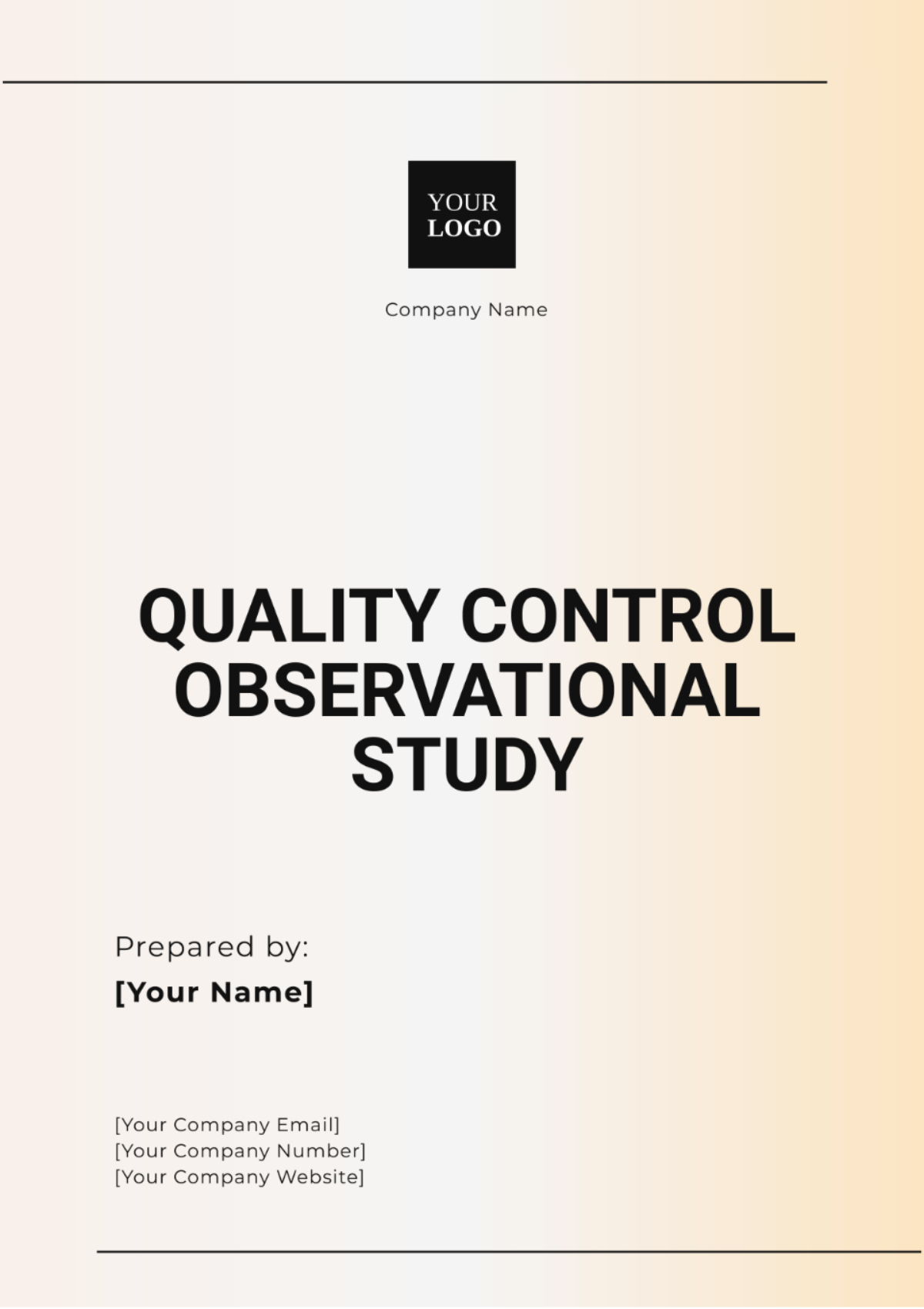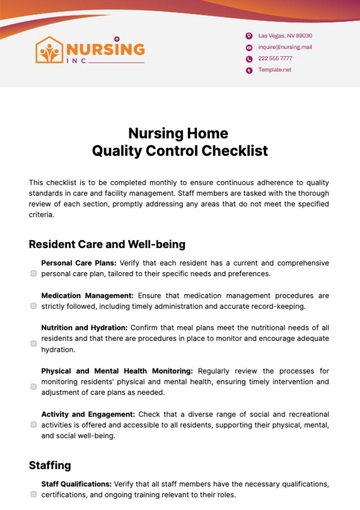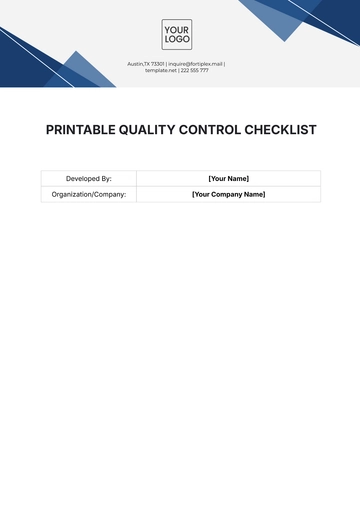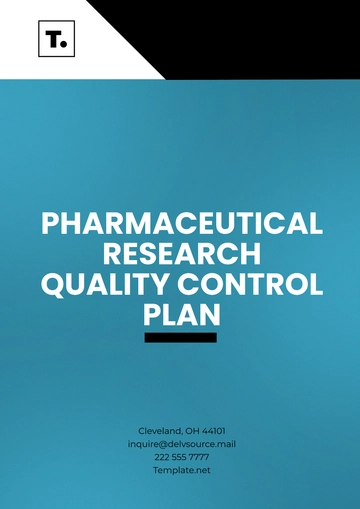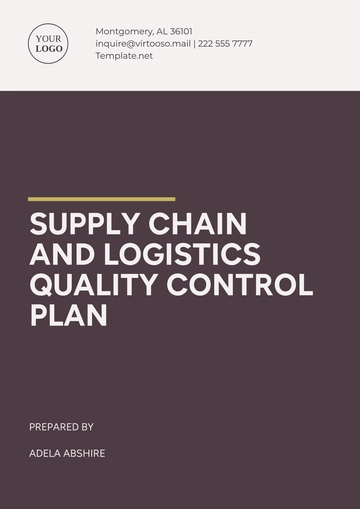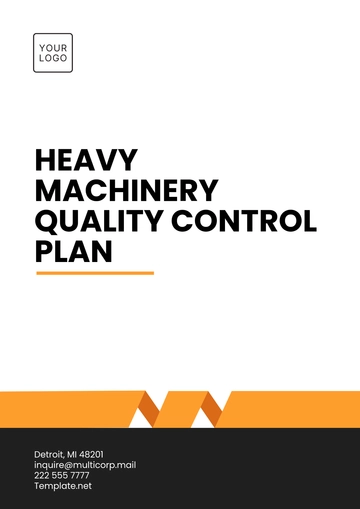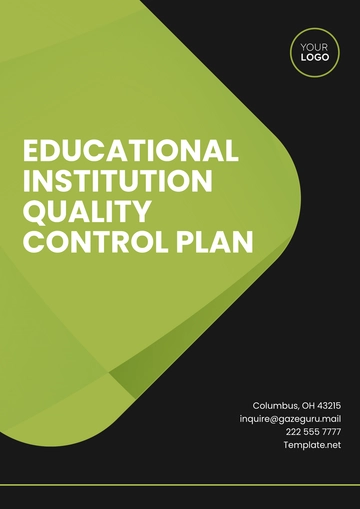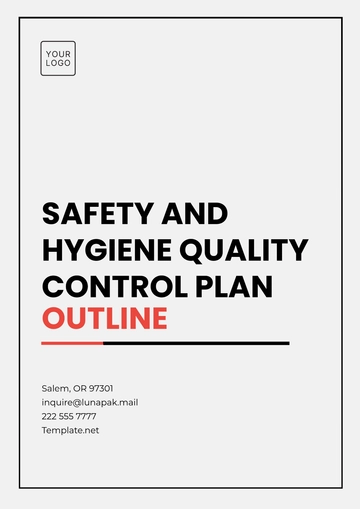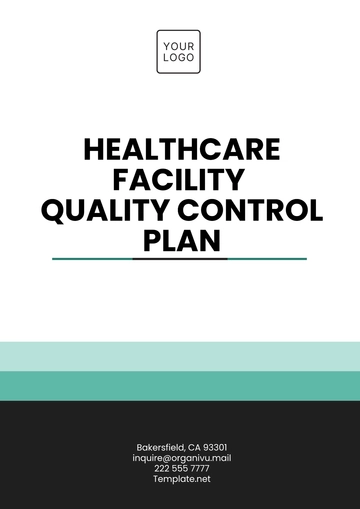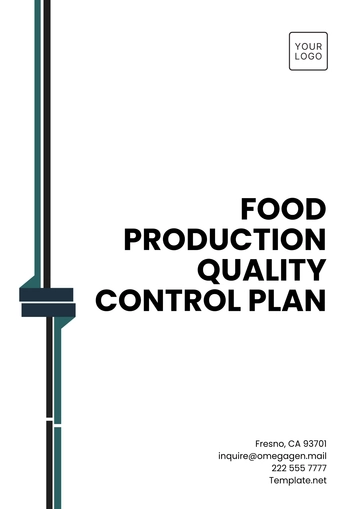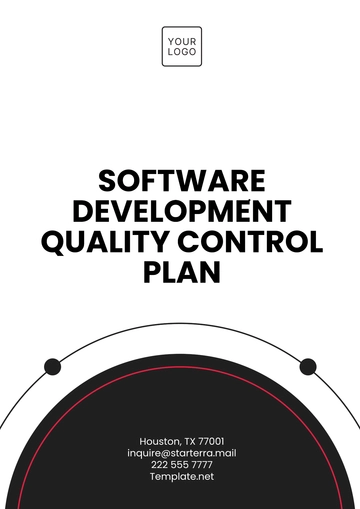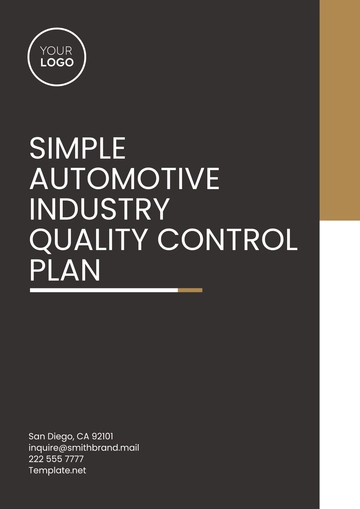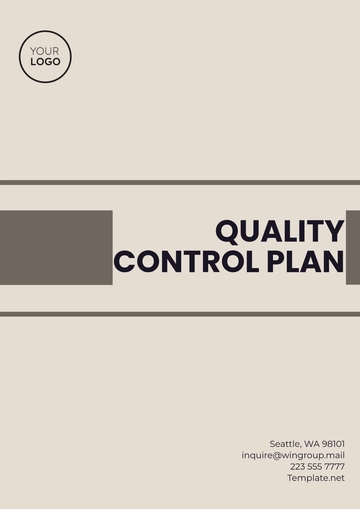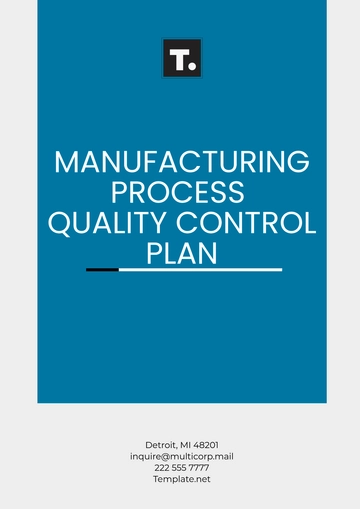Quality Control Observational Study
Prepared by: [YOUR NAME]
Date: [DATE]
I. Introduction
The objective of this study is to evaluate the quality control processes on the production line. This study aims to identify any inefficiencies or defects in the assembly process of Product A and ensure that it meets the established quality standards. By examining the current processes, we seek to uncover issues impacting product quality and provide actionable insights to enhance overall quality control effectiveness.
II. Methodology
The research conducted from August 1 to August 14, 2050, involved systematic observations across three daily shifts using a standardized checklist to meticulously record deviations and quality issues, high-resolution digital cameras to document defects, and advanced quality control software for efficient data entry, analysis, and trend identification, aiming for a thorough evaluation of quality control processes and pinpointing areas for improvement.
III. Observation Data
Date | Shift | Units Observed | Defects Observed |
|---|
August 1 | Shift 1 | 50 | 4 units with visible defects including scratches and incorrect labeling |
August 2 | Shift 2 | 60 | 2 units with defective components; 1 unit with incorrect assembly |
August 5 | Shift 1 | 45 | 3 units with defective components; issues traced to supplier error |
August 10 | Shift 3 | 55 | 5 units with defective components, largely due to machine malfunction |
August 14 | Shift 2 | 50 | 2 units with minor defects, mostly cosmetic |
IV. Analysis
The observations revealed several recurring issues impacting the quality of the production process. Key findings include:
These findings underscore the need for targeted improvements in both machinery maintenance and supplier quality control, as well as adjustments to manage the impact of production volume on defect rates.
V. Recommendations
VI. Conclusion
This study has identified several critical areas where the quality control process can be significantly improved. The key findings emphasize the need for focused interventions in the following areas:
By implementing these targeted improvements, the organization can enhance overall product quality, minimize defect rates, and ensure a more reliable production process. These measures will contribute to achieving higher operational excellence and maintaining robust quality control in future production cycles.
VII. References
Smith, J. A., & Chen, L. (2051). Advanced Techniques in Quality Control for Modern Manufacturing. New York: TechPress.
Williams, R., & Patel, S. (2055). Emerging Trends in Quality Assurance: A Comprehensive Guide. San Francisco: FutureTech Publications.
Observational Study Templates @ Template.net
